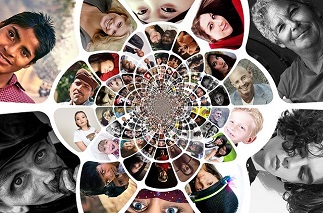
Journalism that tells the future: possibilities and journalistic scenarios for augmented reality
The Gartner Hype Cycle for Emerging Technologies highlights “augmented human technologies” as one of their emerging trends, while the Future Today Institute alludes to the potential of extended reality (digitally manipulated environments encompassing virtual and augmented reality) for the development of new applications with great informative value. Based on this, the current study brings together in-depth interviews with experts who analyze the possibilities of augmented reality (AR) in journalism, including its weaknesses and some proposals for new journalistic scenarios. The study concludes that, according to experts, the use of AR in daily systems and applications is key to establishing this technology. In addition, experts stress the need to carry out sociological and ethical studies of its impact, as well as experimental research on the use of augmented senses in humans, including visual and haptic augmentation and hearing.

Kid influencers in Spain: understanding the themes they address and preteens’ engagement with their YouTube channels
This research analyses the contents of the videos of the ten Spanish children's YouTube channels with the highest number of followers and video plays to identify correlations between the thematic axes of the videos and the increase in digital engagement data. Little is known about the topics that the most popular Spanish-language YouTube influencers share with preteens and young adults' audience. In response, this exploratory study will use content analysis to examine this gap and contrast the themes that its videos reflect against others. For this purpose, interpretive-based content analysis is carried out based on an analysis sheet validated by expert judgment. Among the main results, it is shown that most of the children who are the lead character of the channel are currently between 10 and 12 years old, having created the channels an average of five years ago, which shows how early many YouTubers are starting in this industry. There are also differences in the thematic axes of the channels' videos according to the gender of the children's influencers, with a higher representation of male YouTubers devoted to gameplays, while their female peers have a more significant presence in videos in the lifestyle category. It is concluded that there is a need to supervise the contents accessed by children on this platform since it can deepen not only gender gaps but also become a wrong reference of role models.

Influence of institutional seniority and type of ownership on university quality rankings: correlational analysis of Peruvian universities
This study evaluates the correlations between the universities' type of property (public, private associative and private corporate), institutional seniority (<20, 20–45 and >45 years) and the presence and position in national and international university rankings. It considers 90 Peruvian universities certified by SUNEDU (public agency for the accreditation of universities in Peru). According to their presence in 20 university rankings (yes/no) and the position (tertiles) in two world rankings: Webometrics and SIR Iberoamericano, four universities participated in 10 or more rankings and only 16 (18%) in six or more. The private corporate universities were the least old (p < 0.01). No association was found with the type of property both in the presence in rankings and in the positioning (p > 0.05), except in one where there was less participation of public institutions. Long-lived universities had higher participation and better positioning in rankings than those with less seniority (p < 0.01). The presence and better positioning in university rankings depend on institutional seniority and not on the type of ownership in Peruvian licensed universities. This research highlights the lack of equity in several international rankings for the evaluation of the quality of universities, in the respect that most of them give priority to aspects related to institutional seniority and size. At the same time, the results of younger and smaller institutions are not put into perspective.

Learning Leaders: Teachers or Youtubers? Participatory Culture and STEM Competencies in Italian Secondary School Students
Youth is increasingly learning in non-conventional contexts, such as social networks or video platforms, courses, and tutorials. This research aims to diagnose the role of participatory culture, digital resources, social networks, and, specifically, YouTube, in learning processes and the acquisition of Science, Technology, Engineering, and Mathematics (STEM) skills, specifically in mathematics, also analyzing the role of youtubers and, in contrast, teachers, both learning leaders in the formation of these skills. In order to accomplish this, mixed methods (quantitative and qualitative) were used, based on a survey applied to 4845 Italian adolescents, as well as a content analysis of the videos and YouTube channel of the Italian educational influencer Elia Bombardelli, one of the most followed and best rated in this country. Also, an in-depth interview has been applied to 12 Italian secondary school teachers. Among the main findings, it is highlighted that all adolescents value YouTube videos as a key resource to improve their school performance, rating youtubers better than teachers. However, it is remarkable that in the processes of learning and acquisition of STEM competencies, they prefer to interact with teachers rather than with youtubers.

Information Quality in Latin American Digital Native Media: Analysis Based on Structured Dimensions and Indicators
The current communicative ecosystem has profoundly transformed journalistic work and the media, generating with great eagerness the emergence of digital native media that do not follow the logic of their conventional peers. Although the advent of these media is not entirely negative, as they create multiple voices that contribute to pluralism, their quality has undoubtedly been questioned on several academic fronts. This work analyzes the most important Latin American digital native media by number of accesses (traffic), using a taxonomy of evaluation of dimensions of the informative quality, in which aspects such as informative sources, uses of international news agencies, correction of contents and factuality levels, ideological plurality in their opinion contents, among others, are taken into consideration. Of the emerging results, the ‘use of statistical indicators’ was the least rated (32.5%), mainly due to a lack of data journalism in the media studied. It is also worth noting that the indicator ‘comments and monitoring’ obtained the second-lowest rating, indicating an absence of conversation between the media and its audience through the comments section of each content.

Otherness as a form of intersubjective social exclusion: Conceptual discussion from the current communicative scenario
This study aims to review the theory based on «otherness» as a form of social exclusion and symbolic violence from the constructions of realities of the media, with particular emphasis on the ethics and aesthetics of language and its role in materializing identity differences. A search for specific criteria and boolean algorithms is carried out in Web of Science and Scopus on «otherness» [AND] «social exclusion», to then submit the emerging results to a co-occurrence matrix by citations with VOSViewer v. 1.6.13. From the relation tree of the most cited documents [min = 7] of the downloaded articles, a critical/analytical reading is made. «Otherness» is reviewed to a greater extent from a Western perspective, and more specifically, from a Eurocentric one. This implies that the study of «otherness» is not sufficiently analyzed by Asian or African authors, who are excluded from the analysis. In this sense, «otherness» is understood as a theoretical construct and as any symbolic construction of the other (phenotypically, but also in ideology, values and customs), but which carries a load of stereotypes that can become polarization, demonization, ergo and violence. Revisiting «otherness» as an informative construct becomes imperative in light of the emergence of extremist groups and xenophobic parties, as well as separatist policies such as Brexit or the Catalan split in Spain. Few articles contribute to elaborating a complete conceptual construct on «otherness» as an epistemological category of communication and information, so this research effort attempts to compile its theoretical discussion.

Determining Factors in MOOCs Completion Rates: Application Test in Energy Sustainability Courses
Massive Online Open Courses (MOOCs) are open educational activities that allow for distance learning and professional updating, although the academic community has questioned their effectiveness due to their low completion rates. This research analyzes which factors (personal, family, social, labor, and instructional design) are involved in the value expectations and engagement of the MOOCs and to what degree these affect the decision to enroll and the completion of the MOOC. To this end, in the context of 12 MOOCs on energy sustainability carried out between 2017 and 2018, 8737 participants were surveyed using two instruments designed according to theoretical constructs and expert judgment. The main results show that all the factors reviewed influence the decision to take a MOOC, although the “professional development” aspect has the most significant impact on participants who have graduated from technical and engineering careers. Additionally, this study emphasizes that the “instructional design” factor is decisive in the engagement of younger participants, showing that the conventional design of xMOOCs (Stanford Model) may be one of the most important reasons for the low completion rates of this type of course.

Incidence of Digital Competences in the Completion Rates of MOOCs: Case Study on Energy Sustainability Courses
Contribution: This article analyzes the correlation between users' digital competencies and their tendencies to successfully complete energy sustainability massive online open courses (MOOCs). In addition to reviewing whether digital competencies are a predictor of the effective completion of the course, this article analyzes whether participants acquire higher levels of digital competence through interaction in the course. Background: Completion rates of MOOCs typically range between 5% and 8%, with respect to registered participants. According to the literature, low rates may be due to factors such as students' lack of motivation or digital competence limitations. Research Questions: RQ1: Is there a correlation between the level of digital competence declared by the participants and their tendency to successfully complete the MOOC? RQ2: Does participation in a MOOC improve participants' digital competencies? Methodology: Two surveys, one pretest and one post-test (before and after the MOOCs), were applied to assess the digital competence levels of the participants. The total population of participants in the 12 MOOCs was 123 124 unique users, from which 9075 participants (pretest) - 7.37% of the universe - and 6029 participants (post-test) - 35.70% of the universe - were extracted as a sample. To determine its internal consistency, an exploratory factorial analysis was performed on both instruments and a Cronbach's alpha greater than 0.8 was obtained in all of its dimensions. Findings: A significant level of moderate to high correlation between the declared levels of digital competence and the trend toward successful completion of the MOOCs under study was observed. However, a significant increase was not demonstrated in the levels of digital competence acquired in the interaction with MOOCs. Conclusions: The level of digital competence of a participant in a MOOC was a valid predictor of their tendency to finish it. Although no increase in the levels of digital competence acquired through MOOCs was demonstrated, this may be because the subject matter of the MOOCs was alien to the indicators and dimensions of the digital competence. Further research could analyze the effectiveness of MOOCs in terms of digital competition at the acquired levels of competition.

Branded Content in Fashion Research: Bibliometric analysis by correlations
Information and Communication Technologies (ICT) have revolutionized all human interactions, creating new spaces and platforms for consumption and entertainment. In that regard, marketing and advertising have had to adapt by refocusing existing tools, as well as creating new strategies to reach their target audiences. Among these emerging tools are the Branded Content, which combines the conventional advertising message with entertainment and ICT, to create emotional and entertainment links between the consumer and the brands. However, given the novelty of Branded Content as an object of academic study, this research seeks to make a mapping of the state of the art that serves as a starting point for the epistemological understanding of the phenomenon, as well as to know the different conceptual positions of the most cited authors of Branded Content, specifically in fashion marketing research. For this objective, a bibliometric analysis is performed through a strategy of co-occurrence and co-citation of Boolean operators from the Scopus database, using the BibExcel tool for frequency counting and VosViewer for the visualization of data and interaction maps. The results indicate that between 2016 and 2018 the co-citation keywords varied widely, from terms such as "content analysis" and "marketing" in 2016, to "fashion films" in 2018, which clearly shows that there is not yet an academic and possibly even a pragmatic consensus on the delimitations of Branded Content.

The Irresponsible Self-Regulation of Media in Spain: High-Grade Alcoholic Beverage Advertising in Sports Radio Programmes
Media must behave ethically towards their audiences since the latter play a fundamental role in shaping reality and public opinion. In this sense, the conduct of all media must be based on social responsibility, with ethical values and in compliance with laws and regulations. The present study analyses the presence of advertising for high-alcoholic-content beverages in sports programs through mentions by the host radio stations or collaborators, taking into consideration that the European directive, as well as Spanish legislation, prohibits the broadcasting of this type of advertising through audio-visual media (television and radio) channels, particularly in sports programs. To this purpose, three stations have been selected for analysis (COPE, Cadena Ser and Onda Cero) according to their daily audience numbers as reported by the General Media Study (a total of 9,000,000 daily listeners). The study was carried out between January and December 2017. A total of 355 mentions of high-alcoholic-content beverages were found, being the figure of the host radio the one that made more this type of advertising. Likewise, this research shows that most mentions of alcoholic beverages occurred in the afternoon (16:00–19:59), with rum (55.8%) and herb liqueurs (36.6%) being the most frequently advertised. It is also important to note that COPE, a radio station that has been sanctioned by the Spanish CNMV for this type of advertising, is precisely the radio station that has the highest frequency of alcoholic beverage advertising in this study (91.8%), which is evidence of the failure of the media self-regulation system in Spain.
